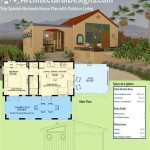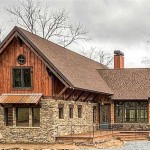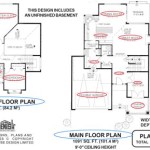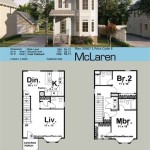How To Draw Up Plans For A Sunroom
Planning a sunroom addition requires careful consideration of various factors, from design aesthetics to structural integrity and local building codes. A well-developed plan is essential for a successful project, ensuring that the sunroom meets the homeowner's needs, integrates seamlessly with the existing structure, and adheres to all relevant regulations. This article provides a comprehensive guide on how to draw up plans for a sunroom, covering key aspects such as initial design concepts, structural considerations, material selection, permit requirements, and cost estimation.
Defining the Purpose and Design Concept
The first step in planning a sunroom is to clearly define its intended purpose. Will it serve as a relaxation space, a dining area, a home office, or a combination of these? The intended use will significantly influence the design, size, and features of the sunroom. Consider how the space will be used throughout the year and what activities will take place within it.
Once the purpose is defined, explore different design concepts. Sunrooms can be broadly categorized into several styles, including:
- Three-season sunrooms: These are typically designed for use during the spring, summer, and fall months. They often feature single-pane windows and may lack insulation and heating/cooling systems.
- Four-season sunrooms: These are designed for year-round use and incorporate insulated glass, proper insulation, and heating/cooling systems to maintain a comfortable temperature regardless of the season.
- Solariums: These structures are characterized by a predominantly glass roof, maximizing sunlight exposure. They are often used for growing plants or as a bright, airy living space.
- Conservatories: These are similar to solariums but often feature a more ornate design and may incorporate decorative elements such as glass panels or elaborate roof structures.
Consider the architectural style of the existing home and choose a sunroom design that complements it. Factors such as roof pitch, window style, and exterior materials should be carefully matched to create a cohesive appearance. Explore different layouts and configurations, considering the orientation of the sunroom in relation to the sun's path and the surrounding landscape. Sketch preliminary designs and gather inspiration from magazines, websites, and home improvement shows.
Think about the connection between the sunroom and the existing house. Determine where the entrance will be located and how the sunroom will integrate with the adjacent rooms. Consider traffic flow and accessibility to ensure that the sunroom is easily accessible and functional.
Addressing Structural Considerations and Building Codes
Structural integrity is paramount when planning a sunroom addition. A structural engineer or experienced contractor should be consulted to assess the existing foundation and determine the necessary structural support for the new sunroom. This assessment will include evaluating the load-bearing capacity of the existing walls and foundation, and designing appropriate footings, foundations, and structural framing for the sunroom.
Local building codes and regulations must be strictly adhered to throughout the planning and construction process. These codes govern various aspects of the sunroom, including:
- Foundation requirements: Building codes specify the minimum depth and dimensions of footings and foundations, as well as the required materials and construction methods.
- Framing requirements: Codes dictate the size and spacing of framing members, such as studs, rafters, and joists, as well as the required connections and bracing.
- Window and door requirements: Codes specify the minimum size and type of windows and doors, as well as the required safety features, such as tempered glass and egress windows.
- Insulation requirements: Energy codes mandate the minimum insulation levels for walls, roofs, and floors to ensure energy efficiency.
- Electrical requirements: Codes regulate the installation of electrical wiring, outlets, and lighting fixtures to ensure safety and compliance with electrical standards.
- Plumbing requirements: If the sunroom will include plumbing fixtures, such as a sink or toilet, codes specify the required materials, installation methods, and backflow prevention measures.
Contact the local building department to obtain a copy of the applicable building codes and regulations. Research permit requirements and application procedures well in advance of starting the project. Prepare detailed drawings and specifications that comply with all applicable codes and regulations. These plans will be required for obtaining building permits and will serve as a guide for the construction process.
Consider the impact of the sunroom on the drainage of the property. Ensure that the sunroom does not obstruct existing drainage patterns or create new drainage problems. Install proper drainage systems, such as gutters and downspouts, to effectively divert rainwater away from the foundation.
Selecting Materials and Systems
The choice of materials and systems will significantly impact the cost, appearance, and performance of the sunroom. Carefully consider the following factors when selecting materials:
- Framing materials: Common framing materials include wood, aluminum, and vinyl. Wood is a traditional and versatile option, but it requires regular maintenance to prevent rot and insect damage. Aluminum is lightweight and durable, but it can be more expensive than wood. Vinyl is a low-maintenance option that is resistant to rot and insect damage.
- Window and door materials: Windows and doors are typically made of wood, aluminum, vinyl, or fiberglass. Each material has its own advantages and disadvantages in terms of cost, durability, energy efficiency, and aesthetics. Consider factors such as U-value, solar heat gain coefficient (SHGC), and air leakage when selecting windows and doors.
- Roofing materials: Common roofing materials include asphalt shingles, metal roofing, and glass. Asphalt shingles are a cost-effective option, but they have a relatively short lifespan. Metal roofing is durable and long-lasting, but it can be more expensive than asphalt shingles. Glass roofs provide maximum sunlight exposure, but may require special coatings to control heat gain and glare.
- Flooring materials: Flooring options for sunrooms include tile, hardwood, laminate, and carpet. Tile is durable and water-resistant, making it a good choice for areas that may be exposed to moisture. Hardwood adds warmth and elegance to a sunroom, but it requires regular maintenance. Laminate is a cost-effective and low-maintenance option that mimics the appearance of hardwood. Carpet is a comfortable and warm option, but it can be susceptible to moisture damage and staining.
- Insulation materials: Proper insulation is essential for maintaining a comfortable temperature in a sunroom. Common insulation materials include fiberglass batts, spray foam, and rigid foam boards. Choose insulation materials with a high R-value to maximize energy efficiency.
- Heating and cooling systems: Consider the heating and cooling needs of the sunroom based on its intended use and climate. Options include electric baseboard heaters, ductless mini-split systems, and extending the existing HVAC system to the sunroom.
Consider the energy efficiency of the materials and systems selected. Choose energy-efficient windows, doors, and insulation to minimize energy consumption and reduce heating and cooling costs. Research government incentives and rebates for energy-efficient products to help offset the cost of these upgrades.
Consider the long-term maintenance requirements of the materials selected. Choose materials that are durable and require minimal maintenance to reduce the overall cost of ownership. Research the lifespan of different materials and consider the cost of repairs and replacements over time.
Developing Detailed Plans and Specifications
Once the design, structural considerations, and material selections have been finalized, develop detailed plans and specifications for the sunroom. These plans should include the following:
- Site Plan: This plan shows the location of the sunroom in relation to the existing house and property lines. It should also indicate the location of utilities, drainage systems, and any other relevant site features.
- Floor Plan: This plan shows the layout of the sunroom, including the dimensions of the walls, windows, doors, and other features. It should also indicate the location of electrical outlets, lighting fixtures, and plumbing fixtures.
- Elevation Drawings: These drawings show the exterior appearance of the sunroom from different angles. They should indicate the height of the walls, the slope of the roof, and the style of the windows and doors.
- Structural Drawings: These drawings show the structural framing of the sunroom, including the size and spacing of the studs, rafters, and joists. They should also indicate the location of load-bearing walls and any special structural considerations.
- Electrical Drawings: These drawings show the electrical wiring of the sunroom, including the location of circuits, outlets, lighting fixtures, and switches. They should also indicate the size and type of wiring to be used.
- Plumbing Drawings: These drawings show the plumbing system of the sunroom, including the location of pipes, fixtures, and drains. They should also indicate the size and type of piping to be used.
- Specifications: These documents provide detailed information about the materials and systems to be used in the sunroom, including the manufacturer's name, model number, and performance characteristics. They should also include information about the installation methods and quality control procedures to be followed.
The plans and specifications should be clear, concise, and accurate. They should be prepared by a qualified architect, engineer, or designer who is familiar with local building codes and regulations. It is always recommended to have architectural plans for any construction project.
Review the plans and specifications carefully to ensure that they meet the homeowner's needs and comply with all applicable codes and regulations. Obtain feedback from contractors and other professionals to identify any potential problems or areas for improvement. Revise the plans and specifications as necessary to address any concerns.
Estimating Costs and Obtaining Financing
Develop a detailed cost estimate for the sunroom project. This estimate should include the cost of materials, labor, permits, and other expenses. Obtain bids from several contractors to get an accurate estimate of the cost of labor.
Consider the cost of site preparation, such as clearing land, grading, and excavation. Factor in the cost of demolishing any existing structures or landscaping that may need to be removed. Include a contingency fund in the budget to cover unexpected expenses. This fund should be at least 10% of the total project cost.
Explore financing options for the sunroom project. Options include home equity loans, personal loans, and construction loans. Compare interest rates and terms from different lenders to find the best financing option. Consider the tax implications of different financing options. Consult a financial advisor for assistance in choosing the right financing option.
Obtain the necessary permits before starting construction. Contact the local building department to determine the permit requirements and application procedures. Submit the plans and specifications to the building department for review. Pay the permit fees and schedule inspections as required.
By following these steps, homeowners can develop comprehensive plans for their sunroom project, ensuring that it meets their needs, complies with all applicable regulations, and is completed on time and within budget.

Design Elements Sunrooms Home Remodeling Plan Examples Architect Sunroom Vector Stencils

House Plans With Sunrooms Or 4 Season Rooms

Sunroom Plans To Create Before Meeting With A Contractor Livingspace

Top 15 Sunroom Design Ideas And Costs

Sunroom Ideas On A Small Budget Custom Exteriors

Sunroom Design Plans Diy Beautify Creating Beauty At Home

Designing The Inside Layout Of Your Sunroom Global Solariums

5 Ideas For Designing The Perfect Sunroom

How To Design And Plan For A Sun Room American Window S

10 Modern Sunroom Ideas To Spark Your Imagination
Related Posts








